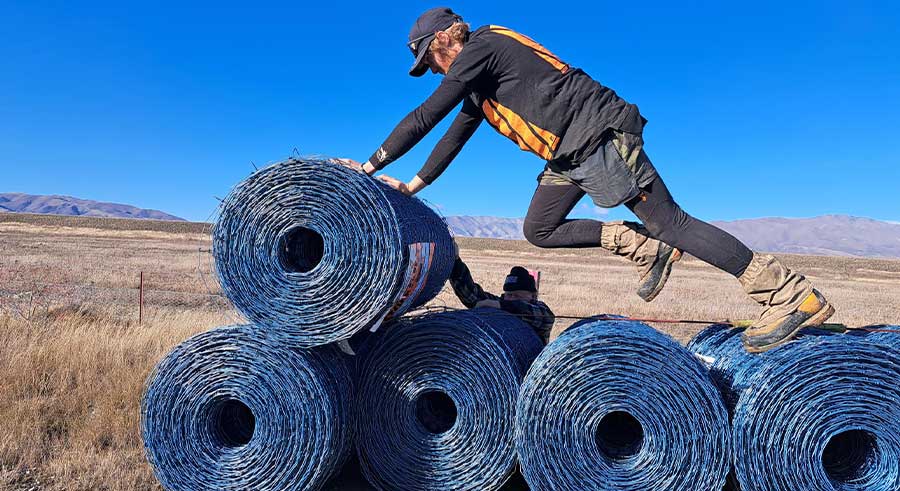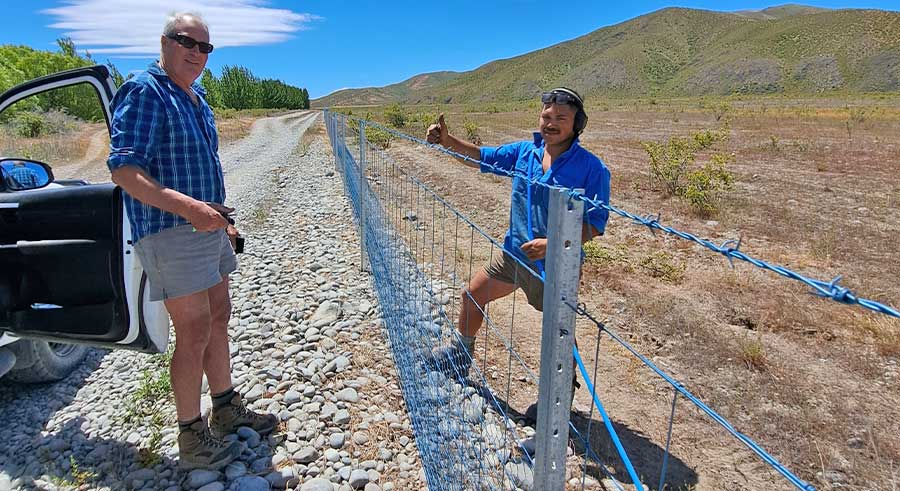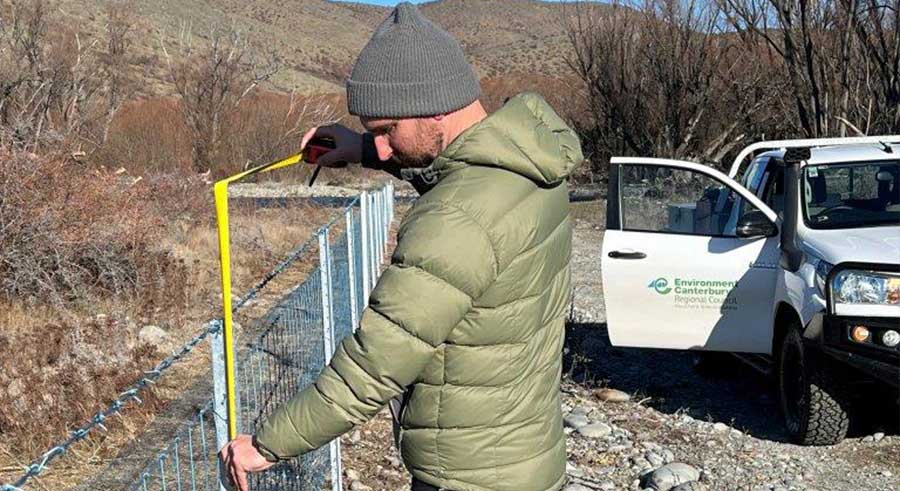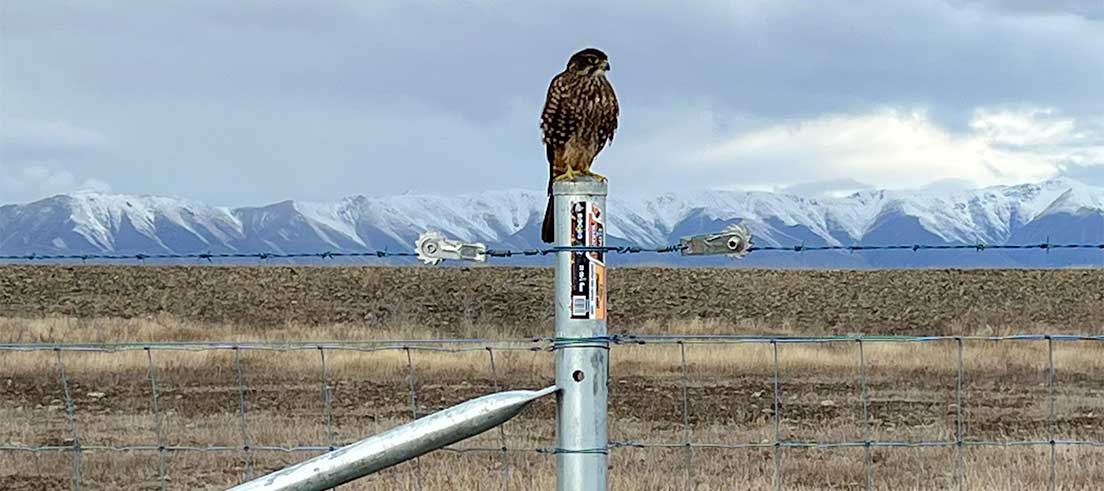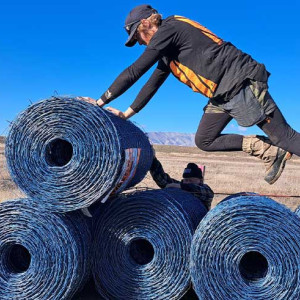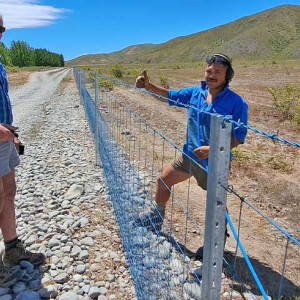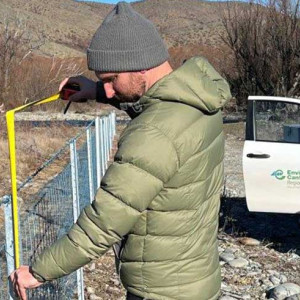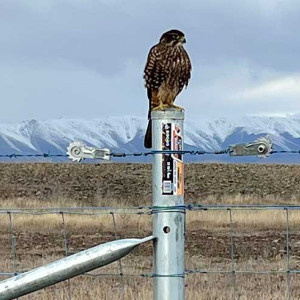The construction of a new fence designed to keep wallabies out of the Mackenzie Basin is advancing well.
Wallaby control work
We work alongside our partners to solve the problem of wallabies. Together we have a vision for a wallaby-free Aotearoa.
What’s being done
We joined the Biosecurity New Zealand (Ministry for Primary Industries)-led Tipu Mātoro National Wallaby Eradication Programme in July 2020.
The programme is a partnership that includes central and local government agencies, iwi, farmers, landholders and communities. The Tipu Mātoro Aotearoa New Zealand wallaby strategy sets out the partnership’s proactive plan for protecting New Zealand’s natural and production environments from introduced pest wallabies.
The three work stream priorities within the national programme are:
- STOP - Continuing to control breeding populations outside the containment area to locally eradicate wallaby numbers.
- SEARCH - Search wider areas outside the containment area to ensure no unknown populations exist.
- SEAL - Intensive control within the containment area buffer or fringe areas to reduce continued wallaby spread.
Once we stop the spread of wallabies from the containment area, and eliminate outlier populations, we intend to progressively reduce densities within containment towards the aspirational goal of eradication when such tools arrive.
Please check our public notices page for upcoming wallaby control work on public land.
Bennett’s wallaby containment area
Wallabies are very mobile and in the last 15 years, their numbers have been increasing exponentially, spreading further afield from Canterbury’s designated 900,000-hectare wallaby containment area.
The containment area is bordered by three river systems - Rangitata in the north, Waitaki in the south and Takapō/Tekapo in the west.
Bennett’s wallaby containment area
Control requirements and responsibility
Responsibility for the planning, coordination and implementation of wallaby control passed to landowners in 1992, after they voted to disband the South Canterbury Wallaby Board and opt for user-pays pest control.
We produced our first Regional Pest Management Plan in 1996. It outlines a compliance-level requirement of what landholders have opted to maintain within the containment area. The plan requires landholders to control and maintain wallaby numbers on their land at or below Level 3 on the Guilford Scale.
Guilford scale~~
The Guilford scale assesses wallaby population levels.
1. No faecal or track sign seen but area known to be within feral range of wallabies.
2. Infrequent faecal sign seen. Track sign absent. One or two pellet groups seen when traversing 100m. Unlikely to see any wallabies.
3. Frequent faecal and track sign seen, but only in isolated pockets. Likely to se some wallabies.
4. Faecal and track sign very obvious and consistent. Tracks are well used. High probability of seeing wallabies.
5. High density of faecal and track sign distribute almost uniformly. Tracks well used. High probability of seeing wallabies.
Coordination
Wallabies do not respect land boundaries or tenure. The best results are achieved by neighbours working together, implementing coordinated control over the largest area possible, with the most appropriate tool.
Pest control requires just as much thought as stock management.
Coordinating control has several benefits:
- it reduces reinfestation potential
- saves money and time
- helps build closer neighbour relationships.
Control methods
It is essential that the wallaby control method is implemented humanely, using best practice and tailored to the level of wallaby present. This will lead to the best results; do it once and do it right. This will save money and extend the control interval. We've created a guide to help you decide on the best control option for your property (PDF file, 29.3MB).
We will carry out inspections within the containment area and, in some cases, may help to coordinate control work between multiple landholders.
Outside of the containment area, we will be responsible for ensuring wallaby populations don’t become established.
The main methods for wallaby control are:
- ground shooting
- aerial shooting
- vertebrate toxic agents (VTAs) – 1080 and Feratox
- wallaby exclusion fencing.
Ground shooting
Guilford Scale Level 1 – 3, or as a follow up for VTAs.
While ground shooting is an important control tool, for many years its use has been overrepresented. On many properties it’s been carried out by recreational hunters in place of experienced pest control contractors. This can contribute to a ‘shy’ or ‘educated’ population and increased wallaby dispersal as they move to quieter undisturbed properties – only to return when the pressure is off.
To avoid facilitating the spread of wallaby further, consider employing a full-time professional wallaby contractor or team between neighbouring properties. This will help ensure an appropriate range of methods are used, tailored to the wallaby infestation level.
Aerial shooting
Guilford Scale Level 1 – 3, or as a follow up for VTAs.
If your property is in the high country and helicopter snow shooting is an option, discuss this with your neighbours well in advance of winter so it can be implemented quickly following a heavy snowfall. This can be a very effective tool to control residual wallaby or maintain low levels.
Vertebrate toxic agents
Guilford Scale Level 3 – 5
We recommend using poison bait for medium to high wallaby levels and use aerial and ground shooting as a follow up control method by experienced contractors.
For larger properties, baiting operations may need to be staged over subsequent years. Try to work from a rolling front to create the most secure reinfestation boundary possible.
Plan baiting operations a minimum of six months in advance to allow neighbouring properties to manage stock movements before and after the planned control.
Wallaby exclusion fencing project
Another great method to control wallabies a wallaby exclusion fence. This is latest development in South Canterbury's war on wallabies. The 48km wallaby exclusion fence aims to contain the spread of these pests and protect the Mackenzie Basin environment. Find out more about this work under the national programme.
Related news
Since 2020, we have teamed up with local and central government agencies to improve wallaby detection and control methods.

